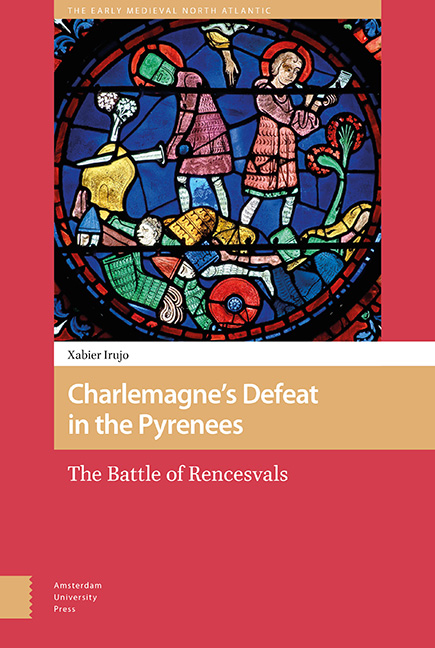1 - Precedents of the Battle
Published online by Cambridge University Press: 18 June 2021
Summary
Abstract
This chapter examines the creation of the Emirate of Cordoba under Abd al-Rahman I and King Charles’ call for the Paderborn Diet in 777. The purpose of the 778 campaign launched by the Frankish king was not to fire up a crusade against Islam but to create a march in the Pyrenees, a vassal domain of the Frankish Kingdom bounded by the 600-kilometer (373-mile) old Roman road connecting Pamplona and Girona. Indeed, sources indicate that King Charles negotiated terms with the Muslim rulers of the Ebro valley and there was no offer on the part of the Muslim emissaries to embrace the Christian faith. However, the religious aspect provided a suitable and effective casus belli and the literary tradition presented this military adventure as the first European crusade.
Keywords: Charlemagne, crusade, Marca Hispanica, Paderborn, Pamplona, Islam
The Paderborn Diet, 777
Charlemagne became king of the Franks in 768 when he reached the age of 21. As custom dictated, the kingdom was divided between the two brothers (divisio regnorum), and Charles ruled with his seventeen-year-old brother Carloman. Carloman died in 771 as the dispute between brothers was intensifying, and Charles became the only heir of the kingdom left by Pepin. In 778, at the age of 31, Charles envisioned the renovatio Romanorum imperii, the restitution of the Roman Empire, a dream inherited from his father. The new king successfully started the first set of military campaigns of his reign between 770 and 776. In the southeast, in the year 770, Charles crushed the insurrection of Hunald II who, after the death of Pepin in 768, tried to restore the duchy of Aquitaine under the protection of Lupus II, Prince of Vasconia. In the northeast, the emperor's troops entered Saxony (Carlus Saxoniam bello adgressus) and, after crossing the rivers Eder and Diemel, they arrived in the vicinity of Eresburg (Eresburgum castrum), about 40 kilometres south of Paderborn, adding these areas to the Frankish domain. In the south, Charlemagne started two campaigns against Lombardy (in 773-774 and 776) as a result of which he incorporated these territories under vassalage to the empire. Desiderio was divested, and Charlemagne took the iron crown and adopted the title of rex Langobardorum that he later passed to his son Pepin (781-810).
- Type
- Chapter
- Information
- Charlemagne’s Defeat in the PyreneesThe Battle of Rencesvals, pp. 15 - 36Publisher: Amsterdam University PressPrint publication year: 2021



